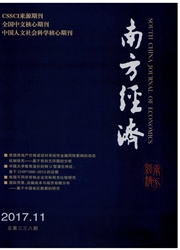

 中文摘要:
中文摘要:
利用加入内生变化国有资产的代际交叠模型,我们分析了国有资产对社会福利水平的影响。研究结果表明,在动态效率经济中,全部国有资产及收益用于投资,经济在黄金律水平均衡,私人消费水平最大化;而如果长期将部分国有资产收益用于支付养老金等消费用途,则稳态资本存量低于黄金律水平,私人消费水平下降。在动态效率条件下,利用变现国有资产充实养老基金优于建立国有股权型养老保障。
 英文摘要:
英文摘要:
By the OLG model with the introduction of endogenetic state-asset, we analysed the impact of the state-capital and state-capital dividend on and social welfare. Under the assumption that the state-capital is the same as private, It is found that if all the state-capital and dividend was installed as the capital of the next period, the capital equilibrium would converge to the Golden Rule with the maximum private consumption in dynamic efficient economy, and if part of dividend was paid to consume constantly as pension, the capital equilibrium would be under Golden Rule with lower private consumption. In dynamic efficient economy enriching pension fund through selling the state-capital is superior to establishing the state--owned share financed social security.
 同期刊论文项目
同期刊论文项目
 同项目期刊论文
同项目期刊论文
 期刊信息
期刊信息
